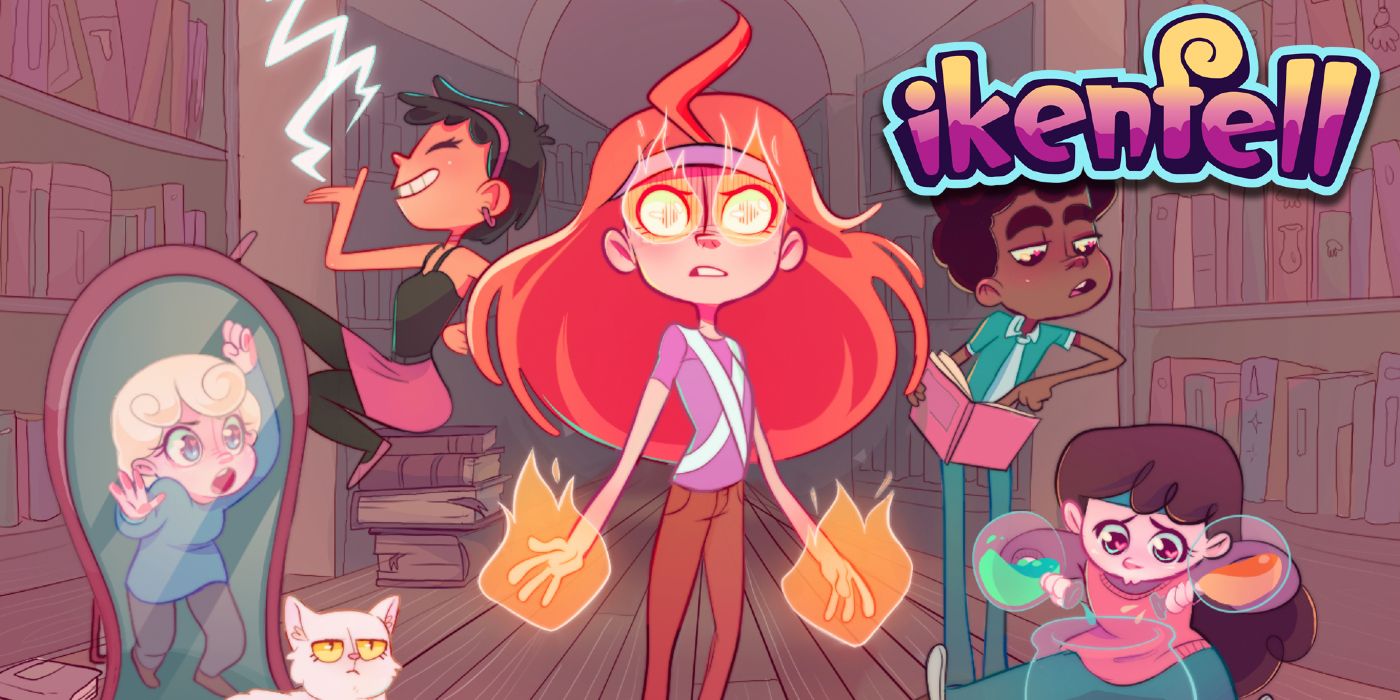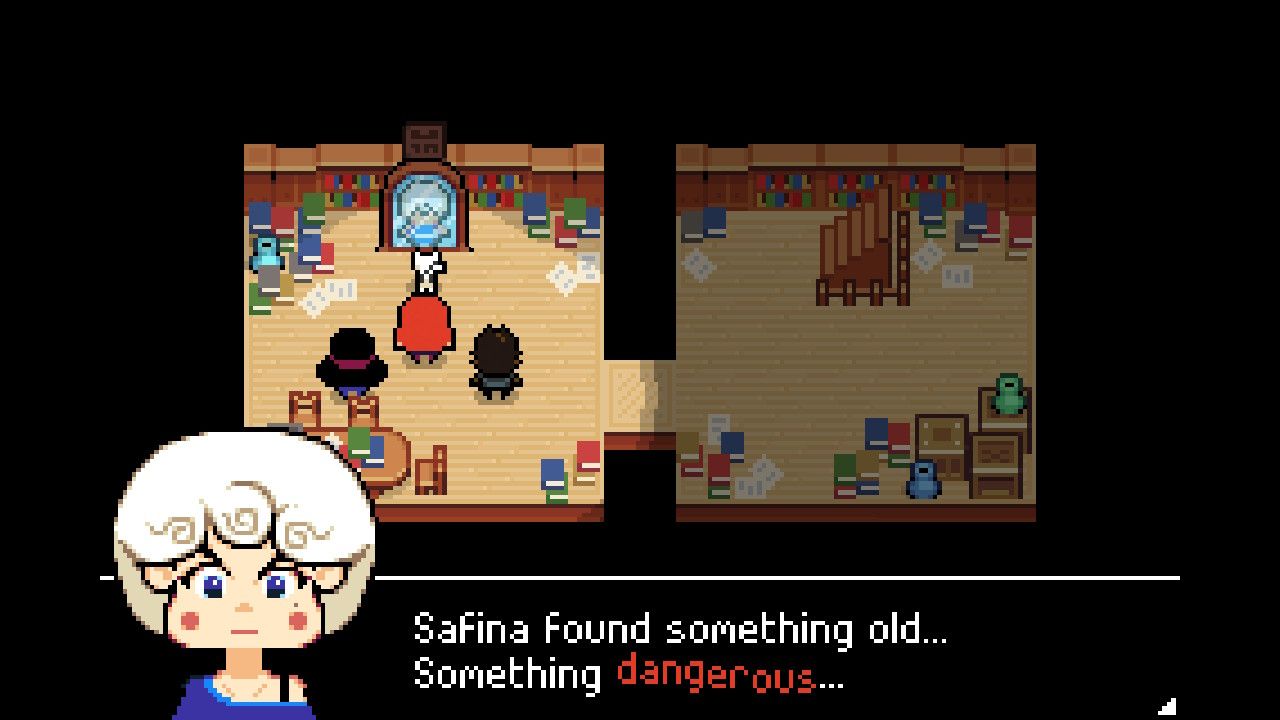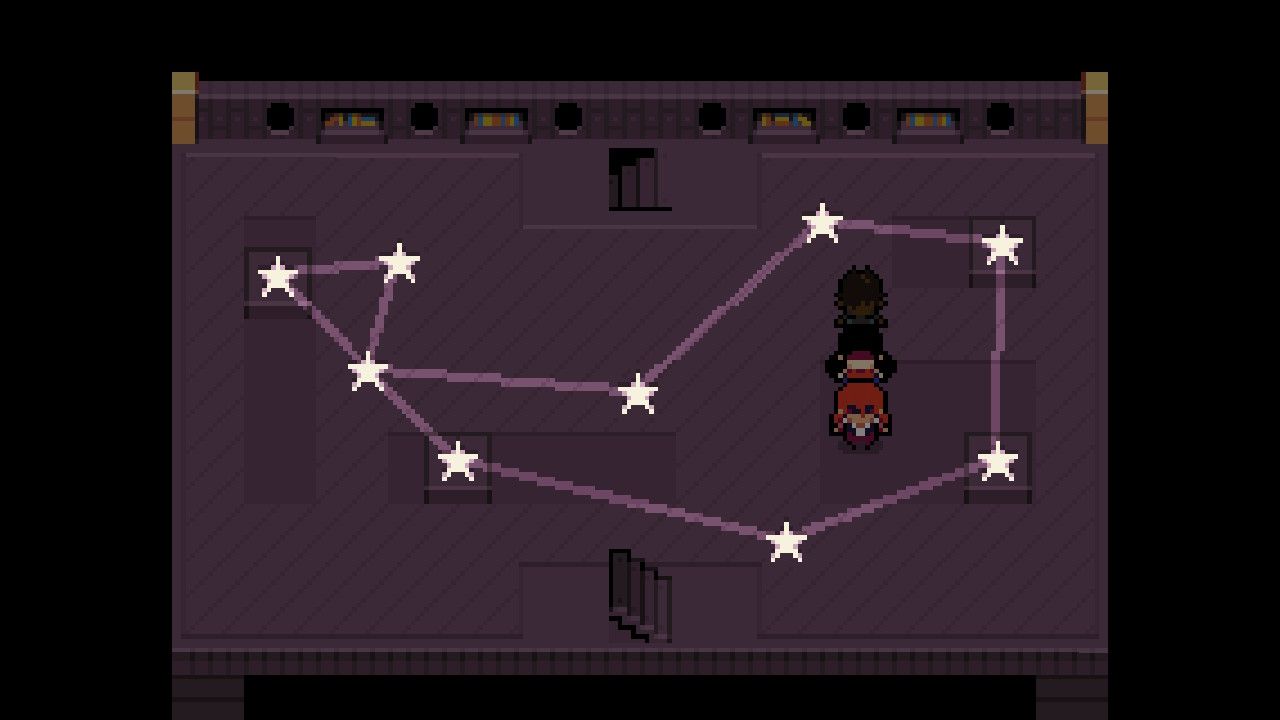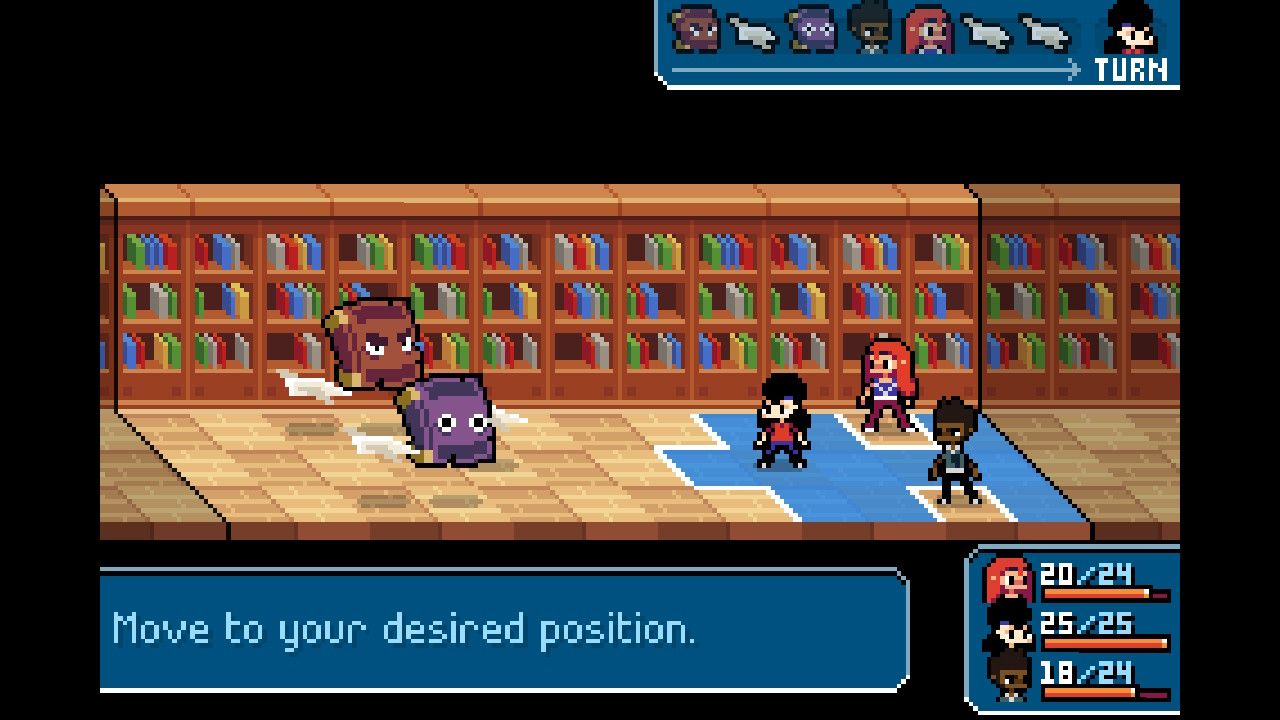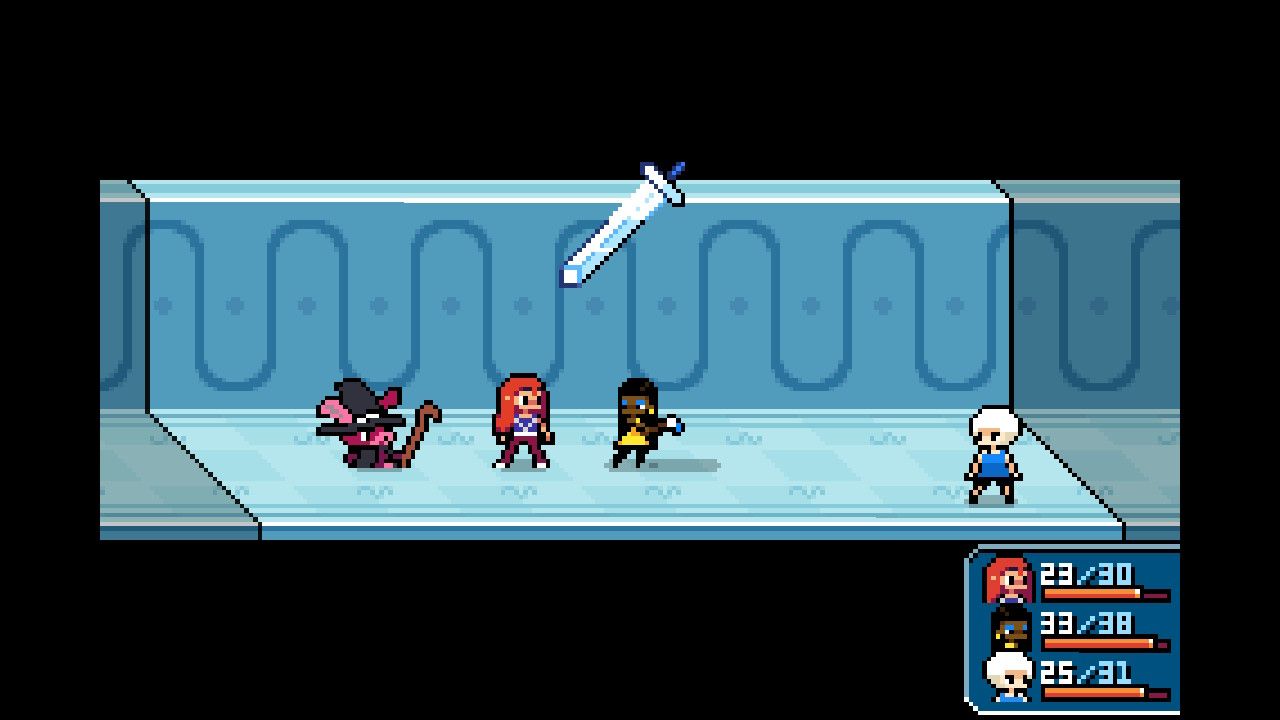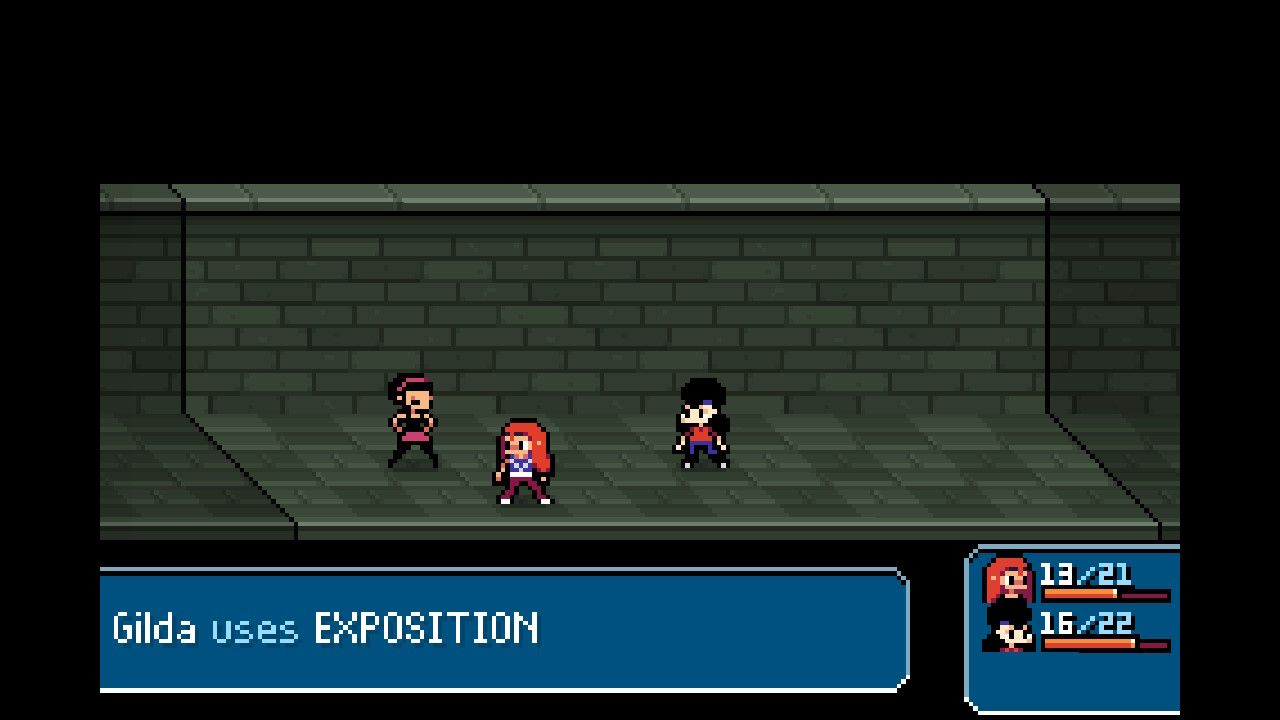The democratization of technology and the Internet has led to independent developers gaining huge acclaim. Titles like Super Meat Boy and Braid helped to popularize modern indies, and out of that has come developers like Toby Fox, whose seminal game Undertale became so popular that Sans got a Mii Fighter costume in Super Smash Bros. Ultimate. Ikenfell feels like it could just as easily become a cultural touchstone.
Originally a Kickstarter project in 2016 spearheaded by Chevy Ray Johnston of Happy Ray Games, Ikenfell pulls ideas from numerous series to craft its turn-based tactical experience. However, by no means is Ikenfell just an amalgam of good ideas. Rather, Ikenfell synthesizes those ideas into a carefully-manicured and unique package all its own, one that lands its heartfelt message about relationships and will leave players up all night looking to get through just one more area.
The game begins with Maritte traveling to Ikenfell, a magical academy hidden deep in the woods, so she can find out what happened to her sister, Safina, after she did not come home for summer break. Maritte discovers the school has been locked down as monsters run rampant, and she recruits Safina's friends and acquaintances as it becomes clear her sister may have something to do with the turmoil.
One obvious point of comparison most players should make is that Ikenfell riffs off of Harry Potter's magic school, Hogwarts. There are two classes of people in Ikenfell's world, Ordinaries and magically inclined, the latter also divided by families who are more wealthy or acclaimed. Students are brought to the school in their teen years by an omnipotent raven, some buildings have shifting chambers, and students must take general classes based on subjects like alchemy.
For those who feel iffy about associations to Harry Potter given creator J.K. Rowling's recent controversies, Ikenfell wears its progressivism on its sleeve. Class is about the only sociopolitical concern that carries from real life. The majority of its characters buck heteronormative standards of sexuality and gender. As in our world, people are all across the LGBTQ+ spectrum, and Ikenfell normalizes this. While everyone explains where each location is on campus, no one has to explain when characters go by gender-neutral pronouns, and there are no overplayed "self-discovery" character arcs.
The main and supporting cast do fall into specific archetypes: Petronella is the neurotic, shy healer who fears abandonment, while Gilda is flashy, flamboyant, and always eager to prove herself in a fight. Yet, they transcend these archetypes by exploring their histories and aspirations, and it's charming to watch them play off one another and the established world. Ikenfell is like Hogwarts on the surface, but has its own rules and lore that players explore through means like studying mythological constellations in the Astronomy Tower.
Ikenfell's art direction goes a long way toward bringing these characters to life. Overworld sprites feature chunky, chibi characters like Celeste, with expressive scene blocking; whereas in battle there are defined, full-body sprites that bounce idly and articulate for an array of movements. Dialogue is presented with complete portraits, and there are seemingly dozens of expressions to define emotions.
While Ikenfell's overworld segments should be familiar to anyone who has played indie RPG Maker or Wolf RPG games like Mad Father, from single-screen areas to multi-windowed item and equipment menus, running into an enemy transitions players to a 3x12 chessboard. Three of the six final party members can be used in battle, and they move anywhere within a given grid ala Final Fantasy Tactics. Turn order is displayed for a number of moves to plan ahead, and experimenting with team composition is encouraged, as everyone gains experience regardless of whether they fight.
Everyone should get used, with each character learning eight spells to stand out. Every spell can affect a specific range of tiles around the character, sometimes changing as they grow more powerful. Tactical positioning varies and is important to remember since allies can obfuscate each other's movements and damage one another. Every attack also has wholly unique animations, sounds, secondary effects, and timing to master.
Battling never becomes boring over the 20-hour adventure, as attacking and defending requires players to utilize action commands similar to older Paper Mario or Mario & Luigi games. There are three levels of success, and defending properly can also negate certain effects like poison. Battles grow more complex on a steady difficulty curve (minus some RPG staples like difficult hidden boss fights), and growing spell catalogs encourage exchanging statuses and battlefield traps.
The only glaring fault in this system is players cannot see how far enemies travel when investigating their remaining health. In strategy games like Fire Emblem, knowing where to place units to tank attacks or avoid them altogether can be important, which dulls some of Ikenfell's tactical potential. It can be annoying to learn every enemy's movements on the fly given how often they are replaced.
However, part of the reason Ikenfell remains exciting is that no area overstays its welcome. Most "dungeons" are only a few rooms and rely on basic puzzle mechanics like spotting blocked items in an isometric plane. There are over 80 different enemies, and few are reskins. The game is incredibly well-paced, and requires no grinding so long as players take on each overworld entity at least once.
Ikenfell's world also has visually splendid areas around every corner, chock full of unique particle effects and artwork. The game excels in setting a mood, and there are abundant save points via roaming cats reminiscent of Mother 3's save frogs. One stand-out aspect of the visual presentation is flashbacks, which are displayed in sepia while text and characters have motion blur. Though the game is designed to be accessible, with options to turn off motion blur, photo-sensitive elements, and even the timing-based action commands.
While everything contributes to a copacetic package, Ikenfell is not without its faults — though many feel up to personal preference. The music, from composers who worked on Cartoon Network's Steven Universe, is universally great at establishing each area; one highlight being the salsa tones of the Alchemy Lab where chaos reigns as magical rules unravel. However, battle tracks can be hit-or-miss, particularly when it comes to boss fights.
One could also argue the battle system doesn't go far enough in incentivizing new team dynamics. Characters work in certain scenarios because of their unique spells, but teams could have been more fleshed out if battles pulled off something like Chrono Trigger's Combo Techs. This would also create new interactions and show story growth as characters move around each other like chess pieces.
That being said, Ikenfell doesn't need an extra push to make its narrative more touching and well-timed, especially atop its unique mechanics and gorgeous art. Throughout the game, players are shown how everyone's relationships change each other. It meditates on the idea that these relationships serve to strengthen and ground them all as the ever-changing seasons of life bring about uncertain situations. What message could be more apt amid the ongoing coronavirus pandemic which has affected much of 2020.
Ikenfell is available now on PC, PS4, Switch, and Xbox One. Game Rant was provided a Nintendo Switch code for this review.

